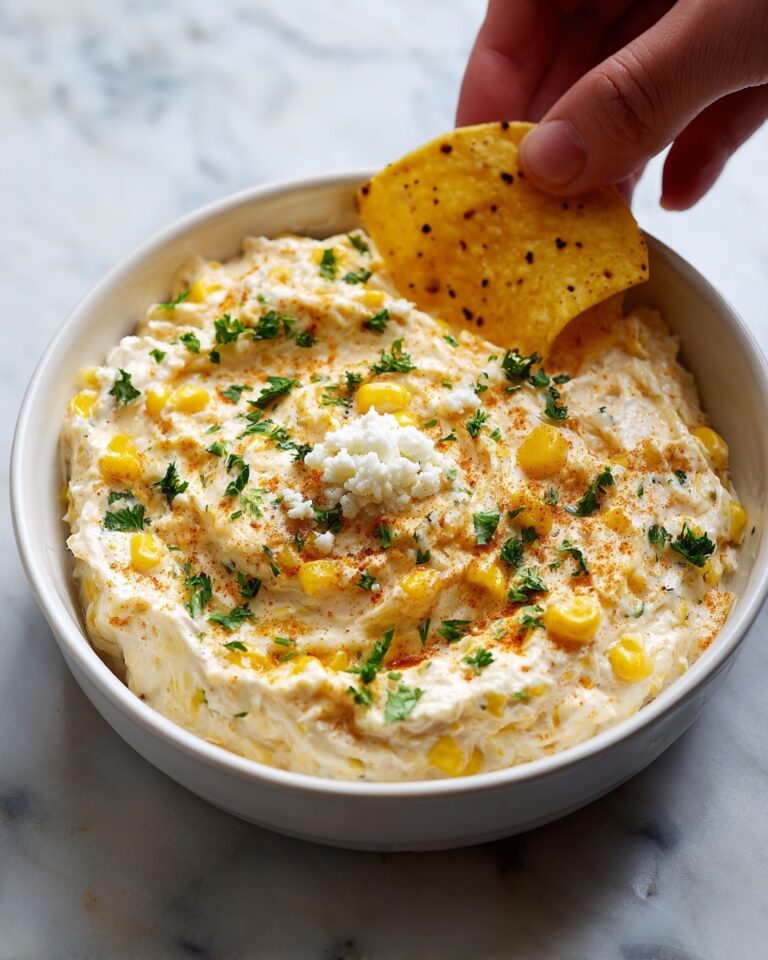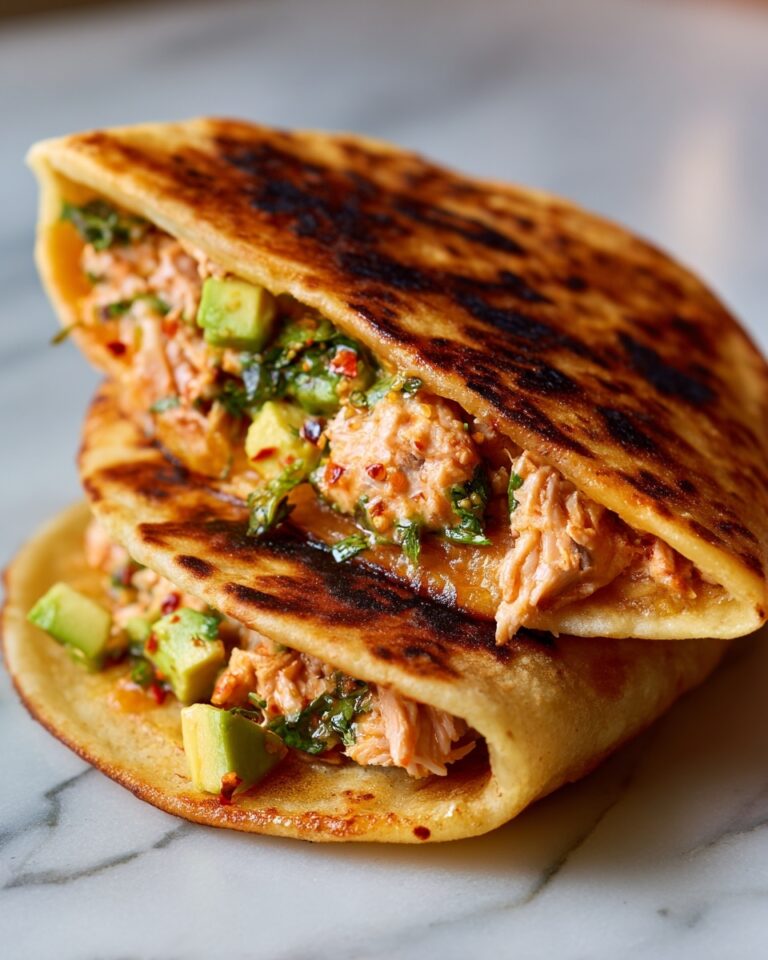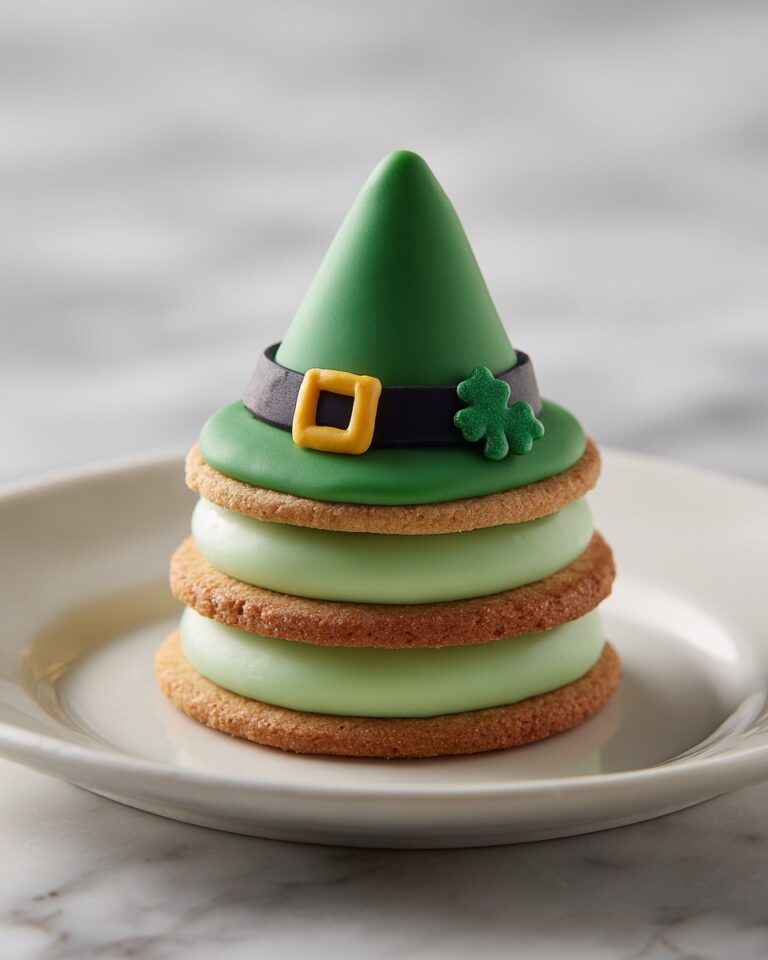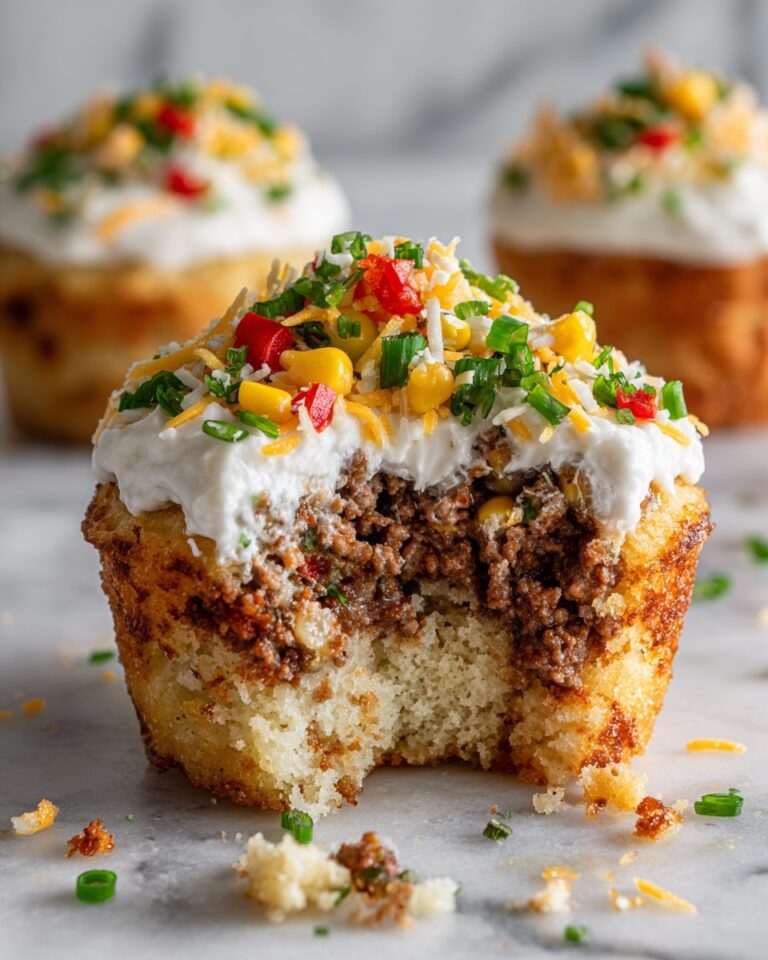If you’re searching for a festive, sweet treat that brings both tradition and joy to your Easter table, this Italian Easter Bread With Dyed Eggs Recipe is an absolute must-try. This beautiful braided bread, studded with colorful dyed eggs, is not only a feast for the eyes but also offers a delightfully soft and lightly sweet texture that’ll have everyone asking for seconds. The combination of fragrant vanilla and orange zest adds a subtle lift that compliments the rich dough perfectly. Baking this bread is a warm, rewarding experience that connects you with a centuries-old Italian tradition, making your celebration all the more special.
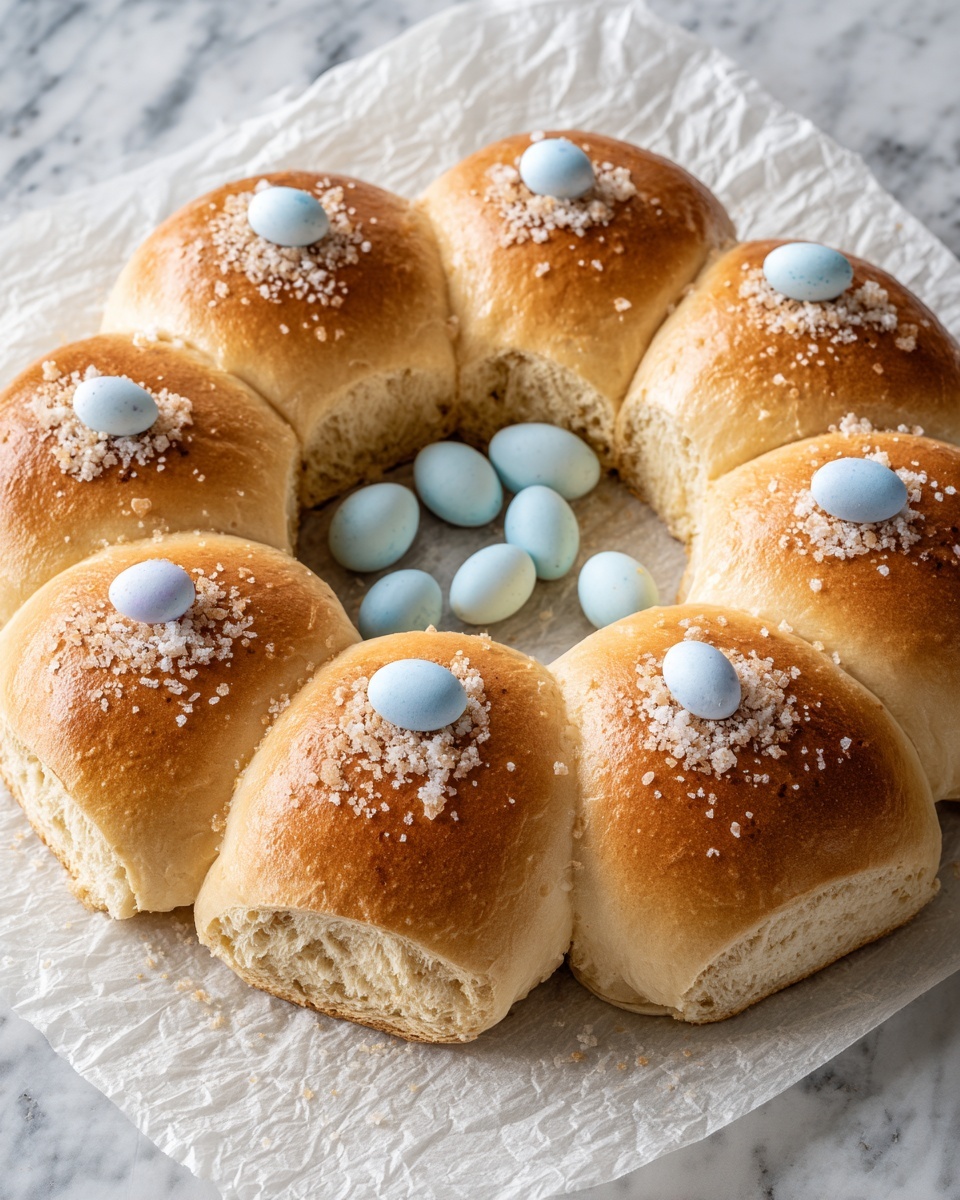
Ingredients You’ll Need
To bring this Italian Easter Bread With Dyed Eggs Recipe to life, we keep the ingredient list straightforward and essential, ensuring that every element works together to create a tender, flavorful loaf with a beautiful golden crust and those bright eggs shining through.
- 4 cups all-purpose flour: The foundation providing structure and chew to your bread.
- 1/2 cup granulated sugar: Adds just the right amount of sweetness to balance the bread’s richness.
- 1 packet (2 1/4 teaspoons) active dry yeast: The magic agent that helps the bread rise to a fluffy perfection.
- 1 teaspoon salt: Enhances all the flavors and keeps the dough balanced.
- 1/2 cup milk, warmed to 110°F: Brings moisture and tenderness while activating the yeast.
- 1/2 cup water, warmed to 110°F: Couples with the milk to hydrate the dough just right.
- 1/4 cup unsalted butter, softened: Adds richness and a subtle buttery flavor to the crumb.
- 2 large eggs: Give structure, color, and richness to the bread.
- 1 teaspoon vanilla extract: Infuses a sweet aroma and flavor that makes this bread special.
- 1 teaspoon orange zest (optional): Lifts the bread with a bright, citrusy note perfect for spring.
- 1/4 cup sugar (for sprinkling): Adds a delicate crunch and sparkle atop the bread if desired.
- 4-6 hard-boiled eggs, dyed in pastel colors: These eggs are the centerpiece, representing renewal and festivity.
- 1 egg yolk (for egg wash): Ensures a shiny, golden crust that’s irresistible.
How to Make Italian Easter Bread With Dyed Eggs Recipe
Step 1: Prepare the Dough
Start by warming your milk and water to the perfect temperature to awaken your yeast. Mix in a tablespoon of sugar before sprinkling the yeast on top and giving it 5-10 minutes to froth up. This lively start ensures a bubbly, well-risen dough that is essential for a light texture.
Step 2: Mix the Ingredients
While the yeast does its thing, whisk together flour, the remaining sugar, and salt in a large bowl. Pour in your frothy yeast mixture along with softened butter, eggs, and fragrant vanilla (and orange zest if using). Mix this until the dough just begins to come together into a shaggy mass—this part is key for developing that soft crumb you love.
Step 3: Knead the Dough
Turn out the dough onto a floured surface and knead patiently for 5-8 minutes until you have a smooth, elastic ball. Don’t hesitate to add a bit more flour if it’s too sticky, but remember to keep it soft because this will give your bread that tender bite. Pop your dough into a greased bowl, cover with a towel, and let it rise peacefully in a warm spot until it doubles in size—about 1 to 1.5 hours.
Step 4: Shape the Bread
Punch down your risen dough to release the air, and divide it into three equal ropes. Roll each into 12 to 15-inch lengths, then carefully braid the strands together before shaping them into a lovely circle. Pinch the ends snugly so your loaf keeps its beautiful round form during baking.
Step 5: Add the Dyed Eggs
This is where your Italian Easter Bread With Dyed Eggs Recipe really comes alive. Gently nestle your pastel hard-boiled eggs into the braid, pressing so they’re secure but without squashing the dough. Arrange them symmetrically or creatively—this is your chance to make the bread a true centerpiece.
Step 6: Let the Dough Rise Again
Cover your braided, egg-adorned loaf with a clean towel and give it another 30 to 45 minutes to rise. This second rise helps create that airy texture and ensures the eggs settle just right in the bread.
Step 7: Prepare the Egg Wash
Whisk together the egg yolk with a splash of water, then gently brush it over your entire loaf. This step creates that irresistible golden gloss you’ll be proud to serve.
Step 8: Bake the Bread
Preheat your oven to a comfortable 350°F (175°C). Place the bread on a parchment-lined sheet and bake for 25-30 minutes. When golden brown and tapping the bottom produces a hollow sound, your bread is ready—an inviting aroma will fill your kitchen!
Step 9: Cool and Serve
Let your Italian Easter Bread With Dyed Eggs Recipe cool on a wire rack before slicing. This resting time firms up the crumb so your slices hold beautifully. Whether you choose to eat the dyed eggs or keep them as decoration, this bread makes a stunning and delicious addition to your Easter feast.
How to Serve Italian Easter Bread With Dyed Eggs Recipe

Garnishes
For an extra festive touch, sprinkle the top with pearl sugar or a dusting of powdered sugar once cooled. A few fresh sprigs of mint or small edible flowers around the serving plate also bring that cheerful spring vibe.
Side Dishes
This bread pairs wonderfully with light accompaniments like fresh ricotta spread, honey, or lemon curd for spreading. A simple fruit salad or a bowl of mixed berries balances the richness and keeps your brunch plates fresh and vibrant.
Creative Ways to Present
Try placing the bread on a rustic wooden board surrounded by small bowls filled with pastel-colored jelly beans or chocolate eggs to echo the festive theme. Another charming idea is to nestle tiny sprigs of rosemary between the dyed eggs for a fragrant surprise.
Make Ahead and Storage
Storing Leftovers
Wrap any leftover bread tightly in plastic wrap or store it in an airtight container at room temperature. It will stay soft and fresh for up to two days and makes excellent toast the next morning.
Freezing
If you want to enjoy your Italian Easter Bread With Dyed Eggs Recipe later, slice it before freezing and separate layers with parchment paper to prevent sticking. Freeze in a sealed bag and thaw at room temperature or pop slices straight into the toaster.
Reheating
For best texture, warm slices gently in a toaster or oven at low heat until just heated through. This quick reheat will revive the bread’s soft crumb and bring out those lovely buttery notes again.
FAQs
Can I use other colors for the eggs?
Absolutely! Pastel colors are traditional, but feel free to use any dye colors you love to make your Italian Easter Bread With Dyed Eggs Recipe uniquely yours. Just ensure your eggs are fully hard-boiled and cooled before pressing into the dough.
Is it okay to substitute whole wheat flour?
While whole wheat flour can be used, it will change the texture and may make the bread denser. For the classic tender crumb of Italian Easter Bread, stick to all-purpose flour or try a blend for a slight nutty flavor.
Can this recipe be made without eggs for egg wash?
Yes, you can brush the loaf with milk or a mixture of milk and honey for a softer shine, but the rich golden color you get from the egg yolk wash is hard to beat for that picture-perfect crust.
How do I make sure the bread rises well?
Keep your rise environment warm and draft-free—ideally around 75-85°F. Make sure your yeast is fresh and your milk and water are at the right temperature to activate it properly.
Can the dyed eggs be eaten after baking?
Definitely! The dyed eggs baked within the bread are perfectly safe to eat. Just peel off the shells as usual, and enjoy a festive and flavorful bite alongside the sweet bread.
Final Thoughts
Isn’t there something incredibly joyful about baking a bread that’s as beautiful as it is delicious? This Italian Easter Bread With Dyed Eggs Recipe is a wonderful way to celebrate tradition and share the warmth of home-baked goodness with loved ones. Give it a try at your next Easter gathering—you might just start a new family favorite!
Print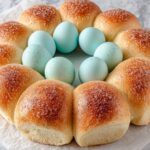
Italian Easter Bread With Dyed Eggs Recipe
- Prep Time: 30 minutes
- Cook Time: 30 minutes
- Total Time: 2 hours 15 minutes
- Yield: 1 large loaf (serves approximately 8)
- Category: Bread
- Method: Baking
- Cuisine: Italian
Description
Italian Easter Bread with Dyed Eggs is a traditional festive bread characterized by its soft, slightly sweet braided dough and colorful hard-boiled eggs nestled within. Perfectly golden and flavorful, this bread brings the joyous spirit of Easter to your table with its vanilla and citrus notes.
Ingredients
Dough Ingredients
- 4 cups all-purpose flour, plus extra for kneading
- 1/2 cup granulated sugar, divided
- 1 packet (2 1/4 teaspoons) active dry yeast
- 1 teaspoon salt
- 1/2 cup milk, warmed to 110°F
- 1/2 cup water, warmed to 110°F
- 1/4 cup unsalted butter, softened
- 2 large eggs
- 1 teaspoon vanilla extract
- 1 teaspoon orange zest (optional, for flavor)
Toppings and Finishing
- 4–6 hard-boiled eggs, dyed in pastel colors for Easter
- 1 egg yolk (for egg wash)
- 1 tablespoon water (for egg wash)
- 1/4 cup sugar (for sprinkling)
Instructions
- Prepare the Dough: In a large bowl, combine the warm milk, warm water, and 1 tablespoon of sugar. Sprinkle the yeast over the mixture and let it sit for about 5-10 minutes until it becomes frothy, signaling that the yeast is active.
- Mix the Ingredients: In a separate large bowl, whisk together the flour, remaining sugar, and salt. Add the yeast mixture, softened butter, eggs, vanilla extract, and optional orange zest. Mix everything until the dough begins to come together forming a shaggy mass.
- Knead the Dough: Turn the dough onto a floured surface and knead for 5-8 minutes until it becomes smooth and elastic. Add small amounts of flour if the dough is too sticky. Place the dough in a greased bowl, cover with a clean towel, and let it rise in a warm place for 1 to 1.5 hours or until doubled in size.
- Shape the Bread: Punch down the risen dough and divide it into three equal portions. Roll each into a long rope about 12-15 inches long. Braid the ropes together and form into a circular loaf by pinching the ends to seal.
- Add the Dyed Eggs: Gently press the dyed hard-boiled eggs into the braid. Arrange them symmetrically or in a pattern you like, ensuring they are securely nestled in the dough to stay in place during baking.
- Let the Dough Rise Again: Cover the braided loaf with a clean towel and allow it to rise for 30-45 minutes until puffed up and nearly doubled.
- Prepare the Egg Wash: Whisk the egg yolk with one tablespoon of water. Brush this egg wash evenly over the entire loaf to promote a glossy, golden finish during baking.
- Bake the Bread: Preheat the oven to 350°F (175°C). Place the loaf on a parchment-lined baking sheet and bake for 25-30 minutes. The bread should be golden brown and sound hollow when tapped on the bottom.
- Cool and Serve: Remove the bread from the oven and cool on a wire rack. Slice once cooled and serve. The colored eggs can be eaten along with the bread or kept as decorative festive accents.
Notes
- Use room temperature eggs and butter for best dough consistency.
- Warm liquids (milk and water) help activate the yeast properly but ensure they are not too hot to kill the yeast.
- Adding orange zest is optional but adds a lovely aromatic citrus flavor traditional to some Italian Easter breads.
- For brighter colored eggs, use freshly dyed hard-boiled eggs made at least a day before assembling the bread.
- Brush with egg wash carefully to avoid washing off the sugar sprinkled on top.
- Store leftovers in an airtight container to maintain freshness for 2-3 days.


